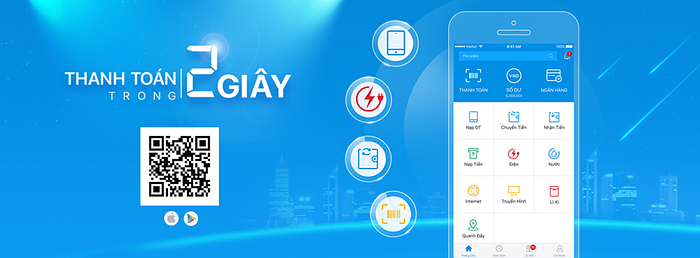ZaloPay And The Battle In Super App Platform In Vietnam
Zalo joins the growing list of Vietnam’s so-called “super apps” which are leveraging their extensive user base to gain a foothold into numerous businesses.
A super app is a “powerful app” that incorporates many functions and features, from social networking and e-commerce to goods delivery, and e-payment.
Grab, Now, Zalo and Go-Viet are currently Vietnam’s biggest players.
Who are they?
ZaloPay is a mobile payment application with use cases for daily life and business needs launched in 2017, relatively late in the payments scene compared to competitors like Ononpay.
Some examples are P2P fund transfers (via QR code), utility bill payment, phone top-up, and credit card. Similar to AliPay as one of three tenets of the “iron triangle” (the others being e-commerce and logistics). GrabPay as an enabler on the Grab ecosystem and WeChat Pay on a social media platform.
ZaloPay is built on top Zalo, the most popular messenger app in Vietnam which was launched in 2012, with >35M active users.
In turn, Zalo is a key product of the Vietnamese conglomerate VNG (formerly Vinagames), Vietnam’s only home-grown unicorn. As of late 2018, it claimed to have ~1.2M retail locations.
This Vietnamese’s super app has been trying to promote the use of QR codes. Users opposed to the costly and inefficient method of issuing POS machines. QR codes are increasingly common in Vietnam and is now implemented at 18 banks.
ZaloPay ranked the 3rd payment application of the year at the 2018 Tech Awards ceremony held by VnExpress newspaper. While competitors MoMo took the top spot, followed by ViettelPay.

ZaloPay is a mobile payment application with use cases for daily life and business needs launched in 2017.
With the purpose to make online payments and pay bills easier, ZaloPay also allows users to eposit and transfer money.
What is their value proposition?
ZaloPay’s biggest value proposition versus its competitors is familiarity, trust, and convenience in setting up. Since many already use Zalo for messaging, it is both easy to adopt ZaloPay (no additional registration needed).
It invokes greater trust in the product, which is extremely important in the e-wallet industry and super app platform.
On top of that, they also offer instant cash out the capability to any linked bank account. Why using ZaloPay, user can link to multiple bank accounts. It is important for consumers and differentiates them from other wallets such as Grab.
Take the Grab-Moca episode in October 2018 for example, when Grab migrated their users over to Moca. Many users can’t access their wallet. The reason is that a KYC process was not well communicated, resulting in what must have been a huge hit to their user base.
Grab already has a large user base. Therefore it is also probably easier for ZaloPay to negotiate partnerships with companies and bring more variety, or increased, use cases to the platform.
Rise of the “super apps” and the battle between the biggest player
ZaloPay joins the growing list of Vietnam’s so-called “super apps” . ZaloPay are leveraging their extensive user base to gain a foothold into numerous businesses.
A super app is a “powerful app” that incorporates many functions and features, from social networking and e-commerce to goods delivery, and e-payment. Grab, Now, Zalo and Go-Viet are currently Vietnam’s biggest players.
Grab said that two out of every ten Vietnamese use Zalo — reached the 100 million user milestone earlier this year.
As for Now.vn, the platform doesn’t share exact numbers. But this super app is the Vietnam’s food delivery leader in terms of daily orders.Now.vn is a brand owned by Foody, a leading culinary media and restaurant listing platform in Vietnam.
In late 2015, Foody had 122,000 listed restaurants, 297,000 reviews, 1.66 million photos, 2.12 million collections, 650,000 app downloads, and 9.1 million monthly visitors, which include 5.9 million mobile users.

Singapore-based tech unicorn Grab offers ride-hailing, food delivery services, good delivery services, logistics services, and since last year, e-payment. It launched its mobile payments services in November 2017 and began offering micro-loans and insurance options in March 2018.
In Vietnam, Grab partnered with Moca Technology and Service company, which holds the payment services license. The two companies launched a cashless payment method called GrabPay by Moca.
Meanwhile, Now.vn is cooperating with AirPay, a digital wallet provider.
The biggest player: WeChat
The Zalo app also comes with several other features including Zalo Shop allows users to purchase commodities online. Users can also check bus routes and weather information, buy airline tickets, look up the sanitation level of food shops. Moreover, they also can update health information, book their medical examination, and pay electricity as well as water bills.
App developers are trying to follow WeChat, China’s leading messaging app with over 900 million users. WeChat has since grown into an enormous ecosystem, encompassing social networking features, mobile financial services, transportation bookings, and more.
“Consumers are increasingly living a modern lifestyle that is accompanied by digital services,” said Tran Thanh Nam, founder, and director of mobile payment player MOCA Technology and Services Corporation.
“In addition to free social networks, they have begun to pay attention to incorporating electronic services for their daily needs. From ride-hailing to food delivery, it comes with safe and convenient non-cash payments.”
However, competition is heating up in the Vietnamese mobile payment market and super app platform with new players like TrueMoneyentering the market. Yet, one of the biggest threats might actually be coming from foreign tech giants.
